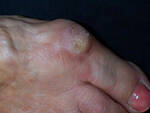Survey from the American Dental Association
PainRelief.com: What is the background for this study? What are the main findings?
Response: Each year, the ADA surveys dentists and consumers around emerging issues or trends in healthcare. As legalization and use of marijuana continues to increase, oral health issues around marijuana use are beginning to emerge. This, combined with a lack of awareness and understanding of the potential adverse health effects of routine marijuana use, was the reason for including it in our survey work.
PainRelief.com: What should readers take away from your report?
Response: Because legalized marijuana, whether personal or medicinal, is still relatively new, people may not be aware of the effects marijuana can have on oral health and dental visits. Readers should be aware that marijuana use can effect oral health in general as well as limit the care delivered at dental visits if used before an appointment.
Dentists and patients should also take away the importance of open conversation about marijuana use during dental visits. Health history updates can be a natural place to start an open dialogue.








